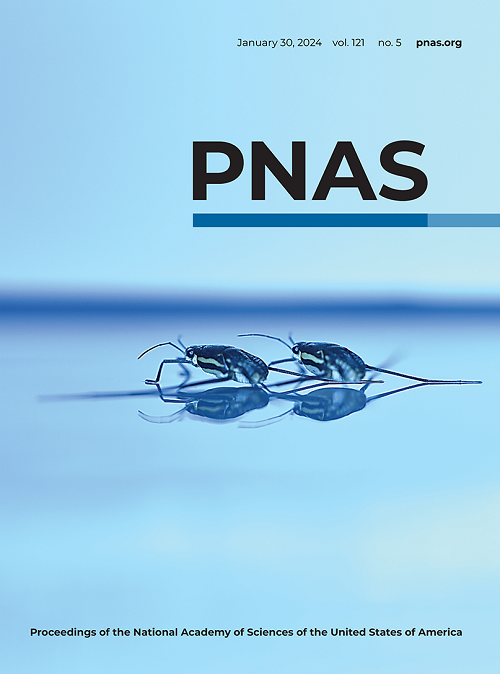夜间的光线通过与束周核相关的视觉通路对昼行性灵长目树鼩的情绪产生负面影响
IF 9.4
1区 综合性期刊
Q1 MULTIDISCIPLINARY SCIENCES
Proceedings of the National Academy of Sciences of the United States of America
Pub Date : 2025-06-06
DOI:10.1073/pnas.2411280122
引用次数: 0
摘要
为了更好地了解长期夜间光照(LAN)对健康的潜在威胁和潜在的视觉通路,我们采用了一种被广泛接受的日间动物模型树鼩(图帕亚belangeri chinensis),这是灵长类动物的近亲,并评估了长期夜间光照的有害影响。我们使用在小鼠中建立的早期夜间局域网范式来检查成年雄性树鼩的行为和生理后果。我们发现,3周的LAN暴露显著损害了树鼩的情绪和长期记忆,但不影响一般活动模式。我们发现视网膜投射到缰核周围(pHb),这是lan诱导负性情绪的关键区域,并证明pHb继续支配树鼩伏隔核(NAc)。此外,LAN对情绪的影响需要ph值,而不需要长期记忆。含有NAc区域的脑组织转录组学分析显示,lan治疗后,NAc神经元中几个抑郁相关基因发生了剧烈变化,这表明长期暴露于夜间光线可能导致树鼩的持久变化。总的来说,我们提供了行为和神经结构的证据,表明LAN通过与ph相关的视觉通路在白天的动物中产生抑郁诱导作用,这可能有助于将过量LAN暴露于人类的实验室研究结果转化为临床应用。本文章由计算机程序翻译,如有差异,请以英文原文为准。
Light at night negatively affects mood in diurnal primate-like tree shrews via a visual pathway related to the perihabenular nucleus
To better understand the potential health threats and underlying visual pathways of long-term light at night (LAN) exposure, we adopted a widely accepted diurnal animal model tree shrew ( Tupaia belangeri chinensis ), which is a close relative to primates, and evaluated the deleterious effects of long-term LAN exposure. We used an early-night LAN paradigm that was established in mice to examine behavioral and physiological consequences in adult male tree shrews. We found that 3-wk LAN exposure significantly impaired the mood and long-term memory of tree shrews without affecting the general activity pattern. We identified retinal projections to the perihabenular nucleus (pHb), a crucial area in LAN-induced negative mood, and demonstrated that the pHb continues to innervate the nucleus accumbens (NAc) in tree shrews. Moreover, the pHb was required for the LAN effect on mood but not long-term memory. Transcriptomic profiling of brain tissues containing the NAc area revealed drastic changes of several depression-related genes in NAc neurons post-LAN treatment, suggesting that long-term exposure to nighttime light could result in lasting changes in tree shrews. Collectively, we present behavioral and neural structural evidence that LAN exerts depression-inducing effects in diurnal animals via a pHb-related visual pathway, which may facilitate the translation from laboratory findings of excessive LAN exposure to clinical applications in humans.
求助全文
通过发布文献求助,成功后即可免费获取论文全文。
去求助
来源期刊
CiteScore
19.00
自引率
0.90%
发文量
3575
审稿时长
2.5 months
期刊介绍:
The Proceedings of the National Academy of Sciences (PNAS), a peer-reviewed journal of the National Academy of Sciences (NAS), serves as an authoritative source for high-impact, original research across the biological, physical, and social sciences. With a global scope, the journal welcomes submissions from researchers worldwide, making it an inclusive platform for advancing scientific knowledge.

 求助内容:
求助内容: 应助结果提醒方式:
应助结果提醒方式:


